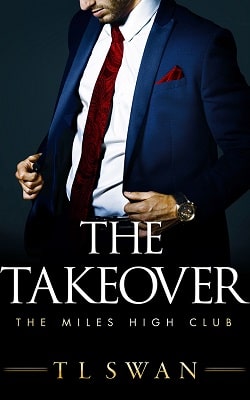r />
The first big spat of the conference was over the chairmanship. Before they sailed for Europe, the Americans had been led to believe that they had been promised the chair. In London they discovered that the French finance minister, Georges Bonnet, coveted the post. After all, this was a conference about international money and France was the sole great power still on the gold standard. “With Washington committed to devaluation we cannot have an American as monetary chairman,” declared Bonnet. “With France committed to repudiation,” replied James Cox, referring to the French default on war debts, “we cannot have a Frenchman.” It was all downhill from there.
In the first few days of the conference as more than a thousand people crammed into the small and poorly ventilated museum, each nation was permitted a fifteen-minute opening statement—which, allowing for translations, occupied four whole days. Supporting the American delegation was a team of financial experts, which included Warburg, Harrison, and Oliver Sprague, professor of economics at Harvard, Roosevelt’s old economics teacher, a longtime adviser to the Bank of England and now an adviser to the U.S. Treasury. They had all arrived in London believing—perhaps because they wanted to believe it—that the president had given them a mandate to negotiate an arrangement to stabilize currencies. But recognizing that a debate about key currencies in a forum of a thousand delegates would quickly deteriorate into incoherence, they decided to take the discussion offstage. Led by the three major central bankers of the conference—Harrison of the New York Fed, Norman of the Bank of England, and Moret of the Banque de France—a select band gathered out of the limelight at the Bank of England to hammer out an arrangement for stabilizing currencies. For a few days it looked as if the “Most Exclusive Club in the World” was back in business.
They had almost reached agreement—it would have involved allowing the pound to remain some 30 percent below its original gold standard level, the dollar to be propped up at some 20 percent below its par value, and the franc to remain at parity, thus leaving Britain with a modest cost advantage and setting the floor to currencies, which the French were demanding—when word leaked out. Though they had only agreed to a temporary attempt at currency stability for a period limited to the duration of the conference, New York financial markets, fearing a return to the gold standard and the end of Roosevelt’s experiment with inflation, took a tumble. Commodity prices fell 5 percent and the Dow swooned by 10 percent. Roosevelt, who by now had begun taking his cue from the commodity exchanges and stock markets, dispatched a cable to the American delegates curtly reminding them that they were there to focus on plans for economic recovery and were not to be sidetracked by the European obsession with currency stabilization.
Moreover, the White House went out of its way to disavow any knowledge of Harrison’s activities, pointedly reminding reporters that he was not a representative of the government but of the New York Fed, an independent entity. With the rug pulled out from underneath him and feeling betrayed, Harrison returned to New York—he told friends that “he felt as if he had been kicked in the face by a mule.” It was a lesson that the old days of the “Most Exclusive Club in the World,” when central bankers meeting in private could set credit and currency conditions without reference to politicians, were now gone.
The American experts in London still had a hard time getting the message. By the end of June, a new yet more innocuous agreement was negotiated with the British and the French, this time by Warburg and Moley. It committed no one to anything. It merely expressed the intention of the parties to return the pound and the dollar to the gold standard at an unspecified exchange rate and at an unspecified date when the time was right. Again as word of the new agreement came over the wires, New York financial markets expressed their discomfort.
Roosevelt was on his summer yachting holiday with Morgenthau aboard the schooner Amberjack II off the coast of New England. As he torpedoed this new agreement, he made sure on this occasion not to mince his words. “I would regard it as a catastrophe amounting to a world tragedy,” he cabled from the naval destroyer Indianapolis, which had been escorting his boat “if the greatest conference of nations, called to bring about a real and permanent financial stability . . . allowed itself a purely artificial and temporary expedient. . . .” Condemning the “old fetishes of so-called international bankers . . . ,” he declared that the current plans for stabilization were based on a “specious fallacy.” Though Roosevelt would later concede that his choice of words for a cable to be publicly released to the whole conference was a little too strong, he had at least finally got his point across with brutal clarity. He would not allow international considerations to stand in the way of getting the U.S. economy moving again, and devaluation of the dollar was the key to revival.
Maynard Keynes was among the few economists to applaud Roosevelt’s decision. In an article in the Daily Mail headlined “President Roosevelt Is Magnificently Right,” he hailed the message as an invitation “to explore new paths” and “to achieve something better than the miserable confusion and unutterable waste of opportunity in which an obstinate adherence to ancient rules of thumb has engulfed us.”
Thereafter the conference limped to a sad close. A disillusioned Warburg resigned, saying, “We are entering upon waters for which I have no charts and in which I therefore feel myself an utterly incompetent pilot.”
Roosevelt was still not finished. By October 1933, though the dollar had fallen by more than 30 percent, commodity prices began to sink again and the economy started to stall once more. Roosevelt decided that it was time for a new initiative. Warren’s original proposal to devalue the dollar had been controversial enough. Now the professor recommended that the government give the dollar another nudge downward by itself buying gold in the open market.
On October 22, Roosevelt told the country in another of his fireside chats, “Our dollar is altogether too greatly influenced by the accidents of international trade, by the internal policies of other nations and by political disturbances in other continents. Therefore the United States must take firmly in its own hands the control of the gold value of the dollar.” Whereas the first fireside chat had brought clarity to a complex issue, this one was a masterpiece of obfuscation. The following day the government started to buy gold.
Every one of the president’s economic advisers was opposed to the policy. Secretary Woodin had fallen fatally ill with cancer and Undersecretary Acheson was acting for him. Though the punctilious Acheson believed that the new policy was in fact against the law, he decided to sit on his objections temporarily in the hope of heading off even worse policies. Even so he was contemplating resigning when Roosevelt, falsely suspecting that he might be the source of newspaper leaks critical of the gold purchases, fired him. In a surprise appointment, Henry Morgenthau, the man who had first brought George Warren to Washington, became acting secretary of the treasury. In the following weeks, Professor Sprague also resigned from the Treasury, no doubt disappointed at his former student’s failure to grasp the fundamentals of monetary economics.
Every morning at nine o’clock, Morgenthau; Jesse Jones, the head of the RFC; and George Warren would meet with the president over his breakfast of soft-boiled eggs, to determine the price of gold for that day. They began at $31.36 an ounce. The next morning this increased to $31.54, then $31.76 and $31.82. No one had a clue how they went about setting the price, although everyone presumed that some subtle analyses of the world bullion and foreign exchange markets went into their calculations. In fact, the choice of price was completely random. All they were trying to do was push the price a little higher than the day before. The exercise brought out the juvenile in Roosevelt. One day he picked an increase of 21 cents, and when asked why, replied that it was a lucky number, three times seven.
Everyone wanted to know more about the mysterious “crack-brained” economist of whose theories Roosevelt had become so enamored. Much to the dismay of the publicity-shy Warren, his face appeared on the cover of Time magazine. Reporters fina
lly managed to track down the elusive professor who had taken leave from Cornell; he was living at the Cosmos Club in Washington and worked from an office in the Commerce Building with an unlisted phone number. There were no files in the office—he carried all his research in his briefcase and slipped in and out of the White House through one of the side entrances. Anyone knocking at the door would be greeted with a cry, “Not in!”
As the bridge between the government and the markets, it was Harrison at the New York Fed who actually had to buy the gold. Here was a man trained to believe that nothing was more sacrosanct than the value of the currency, a protégé of one of the key architects of the postwar gold standard, being asked to weaken the dollar as an act of policy. It was, as one journalist put it, “like asking a sworn teetotaler to swallow a bottle of gin.”
Harrison was by nature a diplomat. With Wall Street mocking the president for allowing currency policy to fall into the hands of an expert on chickenfeed, it required all his tact and diplomatic skills to act as the intermediary between the bankers and a White House that was breaking every monetary convention in the rule book. When Harrison first informed Norman of the new policy, the British central banker “hit the ceiling.” “This is the most terrible thing that has happened. The whole world will be put into bankruptcy,” he exclaimed. Roosevelt and Morgenthau both roared with laughter at the thought of “old pink whiskers”—Roosevelt’s nickname for Norman—and the other “foreign bankers, with everyone of their hairs standing on end with horror.”
During November and December 1933, Harrison and the president would talk on the telephone several times a week, sometimes several times a day. Though Harrison thought that Warren’s ideas were complete bunkum, he gradually found himself succumbing to Roosevelt’s seductive charm, even becoming an honorary associate member of the president’s circle. And so while all the other hard-currency men who had come in with the new administration—Warburg, Sprague, Acheson, Moley—resigned or were fired, Harrison hung in there, convinced that if he went, Roosevelt might come up with some even more harebrained scheme; or even worse, that Congress would get into the act. And he feared the inflationists in Congress more than Roosevelt’s predilection for wacky ideas.
THE THREE-MONTH interlude in which Roosevelt spent his breakfast hours managing the world’s gold price represents one of the more bizarre episodes in the history of currency policy. It undermined the dignity of the office of president and diminished respect for him abroad. Even Maynard Keynes, who was in favor of managed currencies, dismissed the exercise as “the gold standard on the booze.” But at least the dollar staggered in the right direction.
By the end of the year, Roosevelt had begun to tire of the game; and in January 1934 he agreed to stabilize gold at $35 to the ounce. The dollar had now been devalued by over 40 percent. And while the high priests of Wall Street had prophesied chaos, Roosevelt’s instincts were vindicated. Devaluation changed the whole dynamic of the economy.
This worked in two ways. First, as Warren had predicted, the fall in the dollar did get prices moving upward—by roughly 10 percent per annum. Once prices began rising, the burden of interest payments and the real cost of money were automatically reduced, making businesses more willing to borrow and consumers more ready to spend. By thus shaking the country out of its funk, the dollar move reversed expectations out of their vicious and self-fulfilling downward spiral into a virtuous circle pointing the other way. For as the economy developed momentum, the recovery fed on itself.
Devaluation not only changed the dynamic of spending, it also supplied the fuel to power those expenditures. In the four years after 1933, the value of gold held by the Fed almost tripled, to $12 billion, in part due to the higher value of the existing stock of gold, in part to new inflows of gold from abroad—over $5 billion of additional bullion arrived in the country. Some of this was drawn from other central banks. But most came from the ground, as the higher price spurred the mining industry—worldwide gold production added almost $1 billion a year to world reserves. A high fraction of this additional liquidity went into building up the reserves of banks, which, scarred by the years from 1931 to 1933, took a long time to regain their nerve. Nevertheless, there was enough money flooding through the system that it percolated though to the rest of the economy.
As a consequence, during Roosevelt’s first term, U.S. industrial production doubled and GDP expanded by 40 percent—the largest peacetime increase in economic activity in a presidential term. The expansion did not occur in a straight line and was not uniform. Confidence was still fragile and recovery thus subject to fits and starts. Investment did not rebound as much as consumption—for many of the New Deal policies to support wages hurt both profits and general business confidence. The economic indicator, which took the longest to recover, was employment. Even while production doubled in four years, the number of unemployed remained stubbornly high—by 1936, there were still ten million men without jobs. Again, many of Roosevelt’s measures to boost prices or wages by government fiat raised the cost of hiring workers and hampered recovery. Because the contraction had gone so deep, it still took ten years for the economy to regain its old trend.
While the rebound was powered by an abundance of money at low interest rates, the Fed found itself ejected from the driving seat. Having made such a mess during the collapse, it had lost whatever prestige it once possessed.
In 1935, Congress passed a banking act designed to reform the Federal Reserve. Authority for all major decisions was now centralized in a restructured Board of Governors. The regional reserve banks were stripped of much of their powers and responsibility for open market operations was now vested in a new committee of twelve, comprising the seven governors and a rotating group of five regional bank heads, renamed presidents. The secretary of the treasury and the comptroller of the currency were removed from the Board, giving it theoretically even greater independence from an administration. While these measures improved the efficiency of the Fed’s decision-making machinery, they came ironically enough at a time when there were few decisions to take. In 1934, Marriner Eccles, a Mormon banker from Utah, had taken over as the head of the Federal Reserve Board. Scarred by the experiences of running a bank during the Great Depression, Eccles held to the view that with unemployment still high and confidence still weak, the Fed’s prime task should be to keep interest rates as low as possible.
Though the New York Fed lost much of its clout and was now overshadowed by the Board in Washington, George Harrison soldiered on as its president for another eight years. In 1941, he left to become the chief executive the New York Life Insurance Company. During World War II, he was asked by his old friend Henry Stimson, now secretary of war, to become his special assistant for matters related to the Manhattan Project. He served on the Interim Committee, a secret high-level group formed in May 1945 to examine problems related to the creation of the atomic bomb and to advise on its use against Japan. On July 16, after the successful detonation of the world’s first nuclear device in the New Mexico desert, it was Harrison who was the author of the now-famous cable to Secretary Stimson and President Truman at Potsdam: “Operated on this morning. Diagnosis is not complete but results seem satisfactory and already exceed expectations.”
After the war he returned to the New York Life Company. Like so many central bankers, he married late—at the age of fifty-three—to Mrs. Alice Grayson, widow of his old friend Admiral Grayson, who had been Woodrow Wilson’s doctor and accompanied him to the Paris Peace Conference. Harrison died in 1958 at the age of seventy-one.
22. THE CARAVANS MOVE ON
1933-44
If a man will begin with certainties, he shall end in















